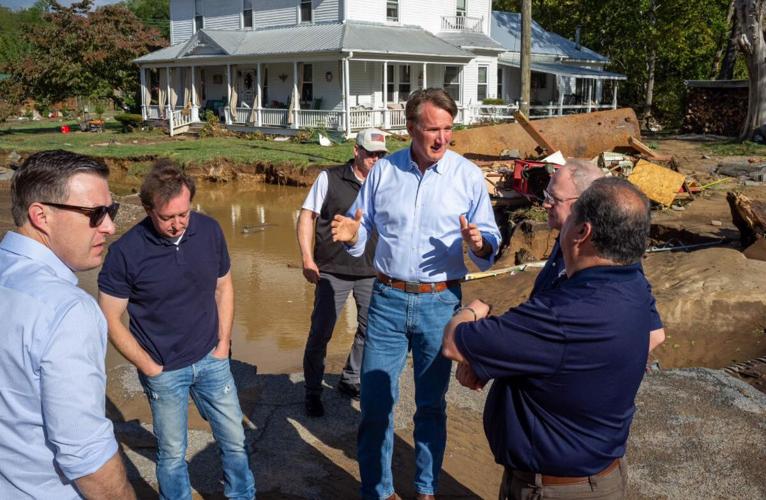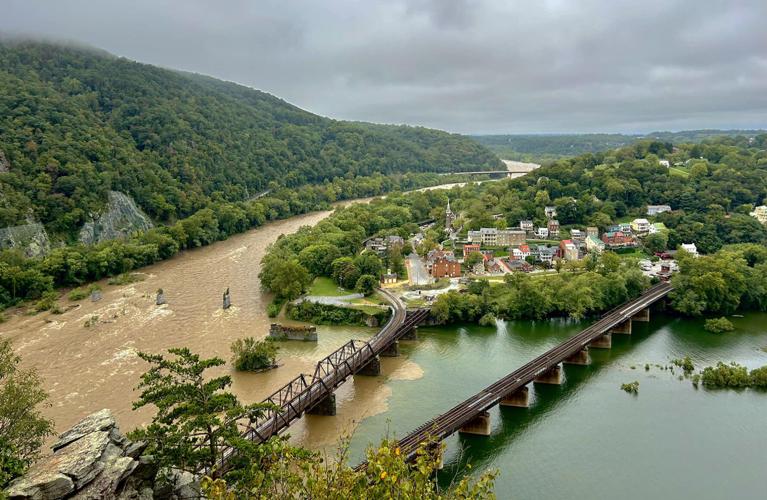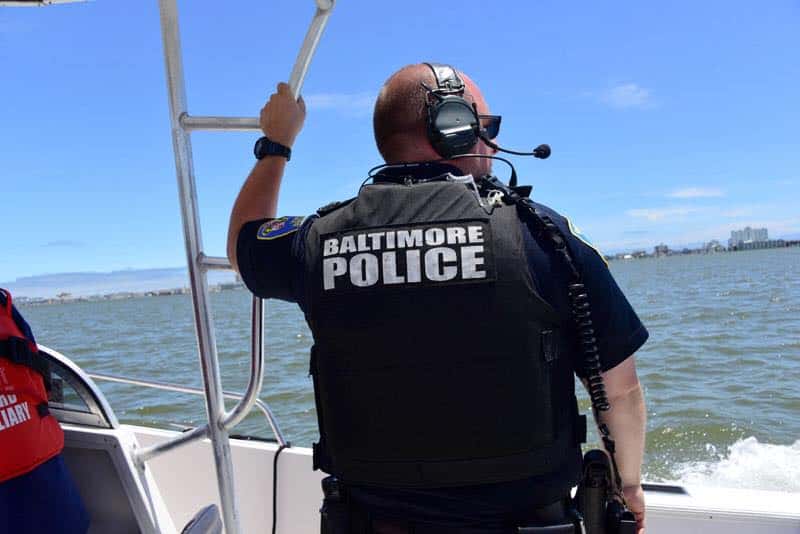During eight days in September, Hurricane Helene quickly swelled into a Category 4 storm that brought rain, flooding and wind damage as far north as central Virginia.
Southwest Virginia, most of which lies beyond the Chesapeake Bay watershed, endured the worst of the storm’s power in the state. But Helene also brought an influx of rain, debris and runoff to Virginia rivers that flow into the Bay. Scientists say most of the impacts will be short-lived but that this storm shouldn’t be ignored. More like it could be on their way.
“I’m not concerned about anything from this particular storm in the Bay,” said Marjy Friedrichs, a professor at the Virginia Institute of Marine Science (VIMS) who researches estuarine systems. “But I think that it’s kind of almost like a wakeup call or a warning that something like this could happen closer to us and in the Chesapeake Bay watershed.”
The hurricane made landfall in Florida on Sept. 26. Heavy rain and high winds hit the Carolinas and Virginia beginning the same day through Sept. 30.
Jason Elmore, Virginia Department of Emergency Management spokesperson, said 47 homes were destroyed and 202 sustained major damage as of Oct. 28. People were left without power and cell service.
Elmore noted that most of the damage was in southwest Virginia. Central Virginia saw little flooding, but winds as strong as those in tornadoes caused damage as far northeast as Buckingham and Madison counties along the Piedmont region.

Julia Raimondi, Department of Environmental Quality spokesperson, said in an email that the agency received reports of wastewater releases triggered by hurricane-related flooding in 11 counties in the Bay watershed.
According to DEQ, the Federal Emergency Management Agency and U.S. Environmental Protection Agency are working to retrieve petroleum storage tanks impacted by the flooding, including some in the Bay watershed.
However, the James, Appomattox, Rivanna and Shenandoah rivers rose to moderate levels over two days after the storm reached Virginia. The James River in west Richmond rose to 14.2 feet on Oct. 2, when it was at approximately five feet the week prior. The Shenandoah River near Harpers Ferry, WV, reached 11.67 feet on Oct. 2, eight feet above its average levels earlier in September.
Some of these rivers also saw rainfall before the storm hit. That means the soil was already well saturated and much of the rain from Hurricane Helene washed into the rivers.
The amount of water flowing through the Shenandoah River in Front Royal, VA, jumped from about 1,000 to 28,000 cubic feet per second over four days, according to the U.S. Geological Survey.
“We saw obviously a tremendous spike of water that came through,” Shenandoah Riverkeeper Mark Frondorf said.
Frondorf is concerned that the flush of water picked up sediment and nutrients from nearby farmland. An excess of nutrients in Bay and its rivers can deplete the water of oxygen and create an inhabitable zone for aquatic species.
James Riverkeeper Tom Dunlap pointed out that rainwater could have picked up bacteria and other pollutants from sewer overflows in cities with old infrastructure like Richmond and Lynchburg.
Manoochehr Shirzaei has similar fears. He leads a team at the Virginia Tech Earth Observation and Innovation Lab, which analyzes the environmental impact of hurricanes.
He said the rainfall from the Helene washed extra loads of sediment in the rivers, as well as freshwater that could impact that balance of salinity downstream in the Bay. He said, though, that any effects would last only a few weeks.
One of his concerns is that the influx could disrupt the salinity and food web in wetlands, which are home to fish, crabs and many other species.
Both Shirzaei and Friedrichs from VIMS said that the Bay region shouldn’t ignore this storm.
While the number of storms isn’t increasing overall, climate change is exacerbating them. A warmer climate creates a warmer ocean that fuels stronger tropical storms. “Going forward, this might be our future, that every year we have many hurricanes that make it high up to Virginia and even further north,” Shirzaei said.
Shirzaei said there are ways to combat the effects of such storms on both people and the environment. He cited public outreach, coastal restoration work and reimagining infrastructure as key components.
“We’re really lucky,” Friedrichs said. “[It’s] not going to be a huge impact this time, but we’ve got to keep watching out that these things could happen more in the future. If the path had been a little different, it could have had a much more significant impact on the Bay waters.”
This story was first published at bayjournal.com on Nov. 12, 2024.




